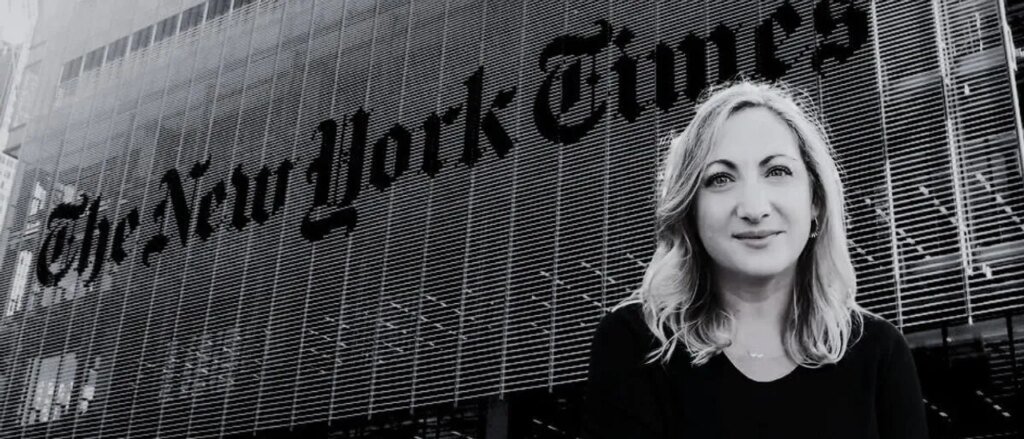Witkoff Case and New York Times Reporting
A recent New York Times piece about Steve Witkoff and his son Alex seems less like serious journalism and more like an attempt to tarnish their reputations. The article, authored by Debra Cummin and Bradley Hope, claims that Steve Witkoff acted as a U.S. envoy during a ceasefire, while Alex allegedly promoted investments from Qatar and Gulf funds to sovereign wealth investors. The framing suggests fraudulent behavior, which the Witkoffs firmly dispute.
The Witkoffs’ legal team quickly lodged a formal complaint with the Times’ Standards Editor, citing a “serious violation” of the paper’s ethical guidelines. Their letter detailed how the reporting exaggerated allegations that hadn’t been previously shared with the family, downplayed their denials, and disregarded credible evidence from earlier fundraising efforts. One glaring inconsistency involved the pre-publication investigation of Kamin regarding Qatar and Saudi Arabia, which inexplicably expanded to include the United Arab Emirates and Kuwait.
Additionally, the complaint highlighted a major inaccuracy: the $615 million Park Lane loan. This was incorrectly presented as a personal liability for Witkoff, along with claims that investors lost significant sums, all while misrepresenting Qatar’s involvement. “This is not journalism,” the family lawyer stated. “It’s a deliberate construction of a narrative contrary to the verified facts.”
Debra Kamin’s Reporting Approach
Debra Kamin, a residential and real estate reporter for The Times, has focused her work on the industry’s inner workings. Her research on housing bias has influenced policy discussions but also indicates a consistent negative perspective on Trump. Just days before the article on Witkoff, she suggested that Trump administration officials would undermine fair housing laws, portraying them as dismantling civil rights.
In her column for the Times Insider, which coincided with the Witkoff story, Kamin implied that her reporting had limitations, stating that editors were tasked with finding unspoken conflicts related to the Trump administration. This commentary reveals a bias that seems to prioritize uncovering conflicts over fair and balanced reporting.
The pattern observed in Kamin’s reporting reflects a broader trend at The Times, suggesting that the newsroom is more focused on illustrating conflict within Trump’s circle than on pursuing unbiased stories. The organization appears to use anecdotal evidence and anonymous sources to craft narratives that support a particular portrayal of Trump allies as corrupt.
Quick to Judge in Trump Cases
The Witkoff situation exemplifies a recurring strategy at The Times: quick reporting followed by a lack of thorough fact-checking. Over the last decade, the newspaper has hurriedly published sensational stories about Trump and his associates, which have frequently unraveled under scrutiny.
- Jared Kushner and 666 Fifth Avenue (May 17, 2018): Initially portrayed as a foreign impact scandal, it turned out to be a routine real estate transaction.
- Ivanka Trump’s Chinese trademark (October 7, 2018): Framed as shady, it simply represented standard trademark processes.
- Trump Soho’s “Mob Tee” (November 1, 2010): Filled with implications, later investigations found no actual wrongdoing.
- Donald Trump Jr. and Trump Tower Conference (July 11, 2017): Dubbed “Watergate 2.0,” investigations later showed the meeting to be insignificant.
- Deutsche Bank Loan (March 18, 2019): Suggested imminent financial crime but ultimately resulted in no criminal charges, just civil disputes.
These instances reflect a swift and sensational approach when Trump is involved, often resulting in reputational harm without factual substantiation.
Delayed Reporting on Democratic Cases
In contrast, the Times appears to take a more measured approach regarding Democrats. While influence is surely bipartisan, such stories aren’t typically exposed until they lose their immediacy, often waiting for lawsuits or confirmation hearings to shine a light on issues.
- Hunter Biden (2014–2018): Stories about his ties to foreign companies emerged well after the fact, with scrutiny occurring much later.
- Frank Biden (January 2021): Promoted as “Joe Biden’s brother,” his connection wasn’t widely reported until much later.
- James Biden (mid-2010s deal): Allegations linking him to securing contracts surfaced years after the venture began.
- Tony Podesta Lobbying (2008–2016): His activities were exposed much later, prompted by external investigations.
- Terry McAuliffe’s Greentech Automotive (2009–2013): Problematics remained local knowledge until an election brought them to light.
- Penny Pretz Car Offshore Holdings: Her business activities also didn’t attract attention until well into the timeline.
- Chris Heinz (2009–2014): Questions around his business dealings were mentioned well after the events.
This contrast is striking. Corruption allegations against Republicans receive immediate attention, while comparable situations involving Democrats often arise much after the fact, leading to a narrative that implies reporters only think to cover it once it’s less relevant.
Ethical Concerns in Reporting
The letter from Witkoff’s attorney criticizes Kamin for violating ethical standards, claiming a failure to allow comprehensive responses or acknowledge existing denials, as well as exposing inaccuracies without corrections. It underscores her apparent mission to uncover conflict within Trump’s sphere, suggesting a predestined narrative rather than genuine reporting.
Citizens recognize that closeness to power often creates business opportunities; both parties engage in such practices. The distinction lies in how the media depicts these scenarios. With Trump officials, it seems the narrative is always suspect; for Democrats, potential scandals are often dismissed until they can no longer be ignored.
The Witkoff case serves as another reminder that, in the Trump sphere, the individuals tend to be presumed guilty until proven innocent—or even if proven innocent, the damage may already be done. This isn’t objective journalism; it’s a “ready. fire. target.” mentality.







